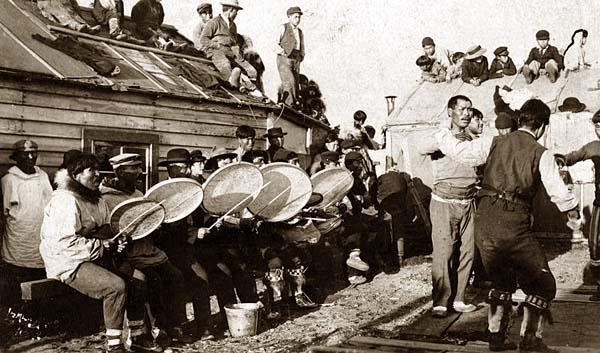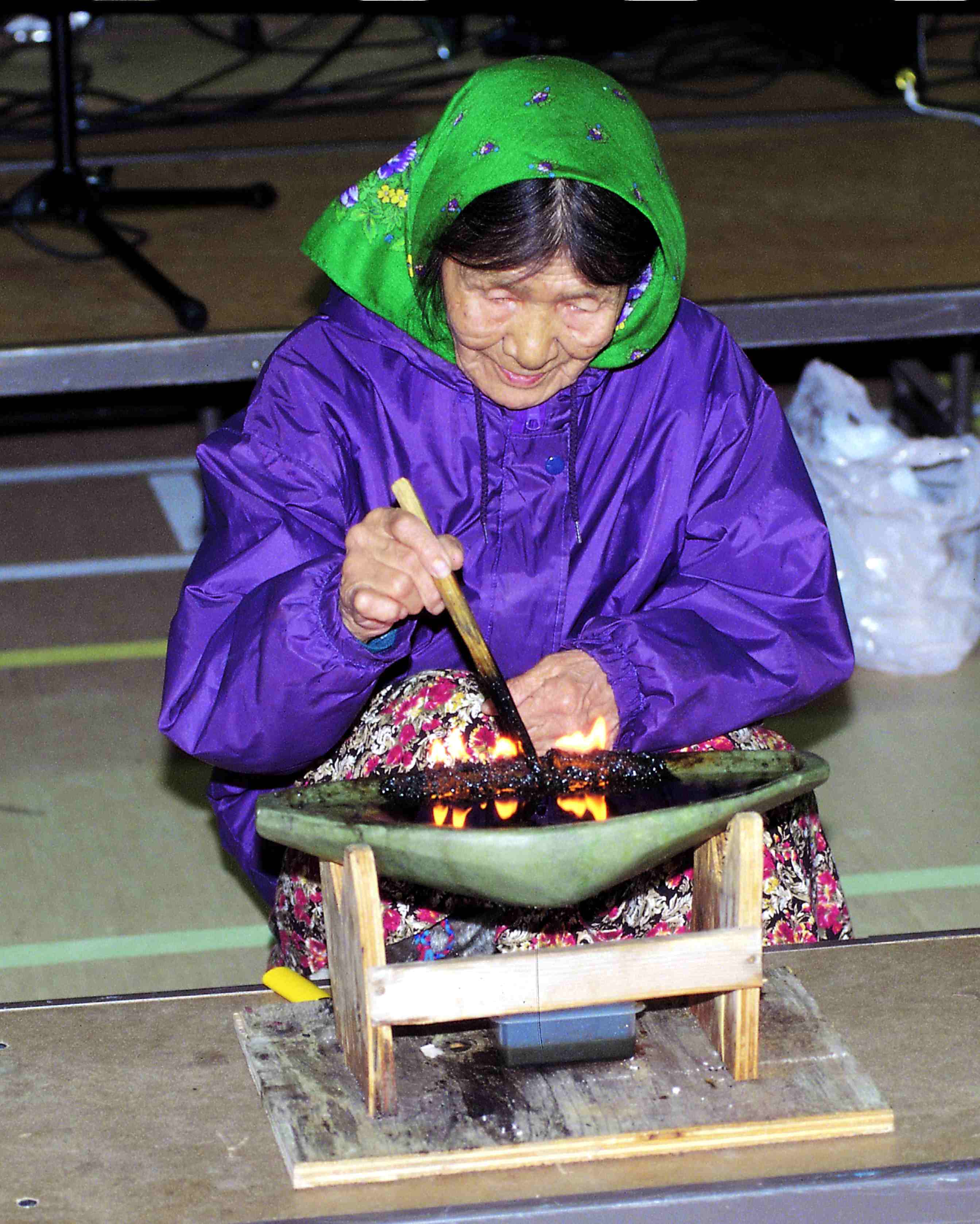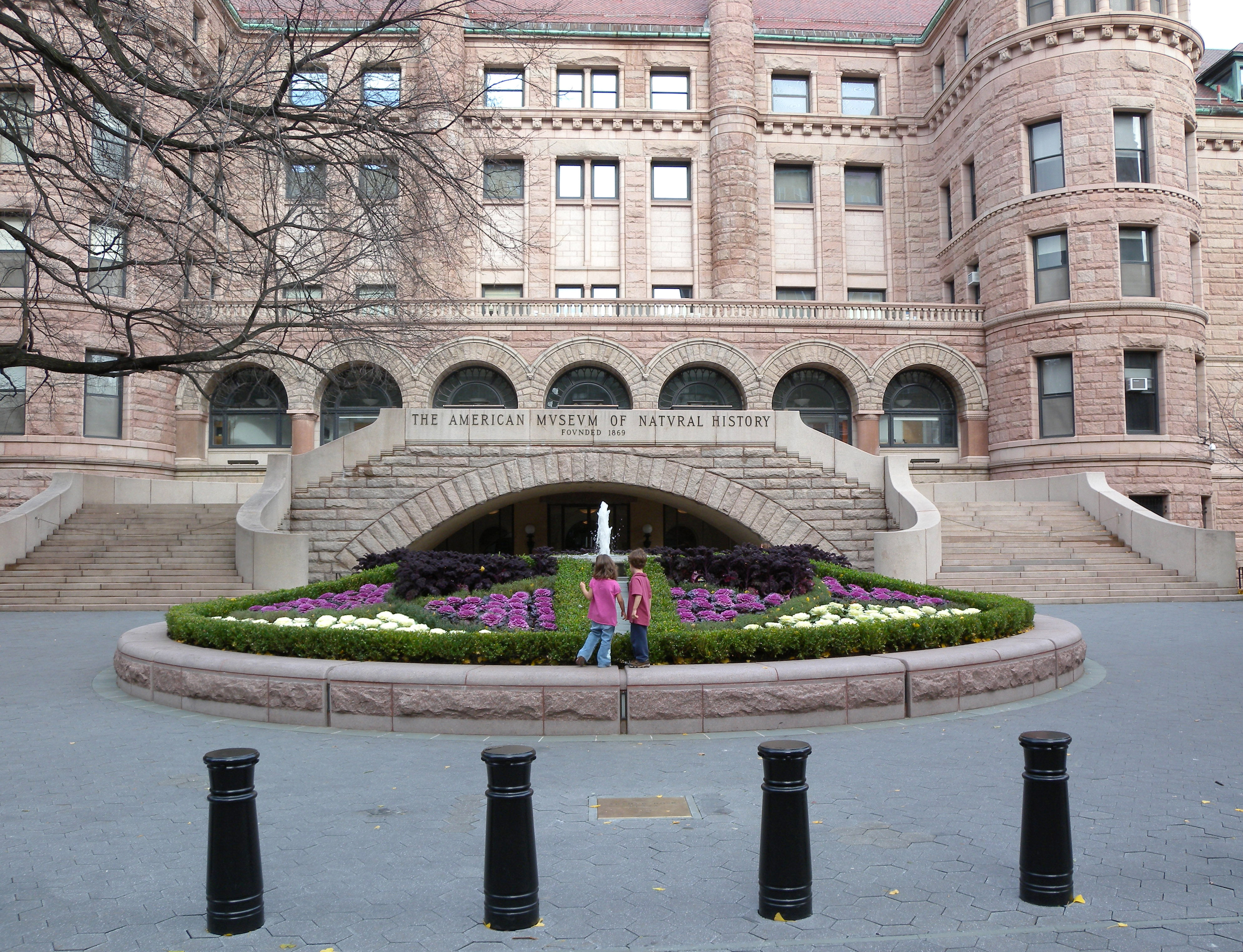|
Sun And Moon (Inuit Myth)
The Sun and Moon is an , a story in Inuit folklore. The traditional explanation for the movement of the Sun and Moon through the sky is that a brother and sister are constantly chasing each other across the sky. The story also explains the moon's dappled gray appearance as soot smeared on his face. Names The brother is most often called Aningaat. In other versions he is simply called Moon (). He is sometimes equated with Tarqiup Inua. Gayle Uyagaqi Kabloona calls him Igaluk. The sister is most commonly called Sun (; ; Natsilingmiutut Natchilingmiutut (ᓇᑦᕠᓕᖕᒥᐅᑐᑦ), Netsilik , Natsilik, Nattilik, Netsilingmiut, Natsilingmiutut, Nattilingmiutut, or Nattiliŋmiutut is an Inuit language variety spoken in western Nunavut, Canada, by Netsilik Inuit. ( 'people fr ...: ). Other times she is simply called "Aningaat's sister". An account by Hans Egede reports her being called Malina or Ajut in Greenland. Gayle Uyagaqi Kabloona, of Canadian Inuit descent, also calls ... [...More Info...] [...Related Items...] OR: [Wikipedia] [Google] [Baidu] |
Inuit Folklore
Inuit religion is the shared spiritual beliefs and practices of the Inuit, an Indigenous peoples of the Americas, indigenous people from Alaska, northern Canada, Greenland, and parts of Siberia. Their religion shares many similarities with some Alaska Native religions. Traditional Inuit religious practices include animism and shamanism, in which spiritual healers mediate with spirits. Today many Inuit follow Christianity (with 71 percent of Canadian Inuit identifying as Christian ); however, traditional Inuit spirituality continues as part of a living, oral tradition and part of contemporary Inuit society. Inuit who balance indigenous and Christian theology practice religious syncretism. Inuit cosmology provides a narrative about the world and the place of people within it. Rachel Qitsualik-Tinsley writes: Traditional stories, rituals, and taboos of the Inuit are often precautions against dangers posed by their harsh Arctic environment. Knud Rasmussen asked his guide and friend ... [...More Info...] [...Related Items...] OR: [Wikipedia] [Google] [Baidu] |
Qulliq
The qulliq or kudlik (, ; ; ), is the traditional oil lamp used by many circumpolar peoples, including the Inuit, the Chukchi and the Yupik peoples. The fuel is seal-oil or blubber, and the lamp is made of soapstone. A is lit with a stick called a . This characteristic type of oil lamp provided warmth and light in the harsh Arctic environment where there was no wood and where the sparse inhabitants relied almost entirely on seal oil or on whale blubber. This lamp was the single most important article of furniture for Inuit in their dwellings. History It is uncertain in which period the seal-oil lamps began to be used. They are part of a series of technological innovations among the Arctic peoples whose introduction and spread has been partly documented. Oil lamps have been found in sites of Paleo-Eskimo communities dating back to the time of the Norton tradition, 3,000 years ago. They were a common implement of the Dorset culture and of the Thule people, the lamps manufactu ... [...More Info...] [...Related Items...] OR: [Wikipedia] [Google] [Baidu] |
Internet Archive
The Internet Archive is an American 501(c)(3) organization, non-profit organization founded in 1996 by Brewster Kahle that runs a digital library website, archive.org. It provides free access to collections of digitized media including websites, Application software, software applications, music, audiovisual, and print materials. The Archive also advocates a Information wants to be free, free and open Internet. Its mission is committing to provide "universal access to all knowledge". The Internet Archive allows the public to upload and download digital material to its data cluster, but the bulk of its data is collected automatically by its web crawlers, which work to preserve as much of the public web as possible. Its web archiving, web archive, the Wayback Machine, contains hundreds of billions of web captures. The Archive also oversees numerous Internet Archive#Book collections, book digitization projects, collectively one of the world's largest book digitization efforts. ... [...More Info...] [...Related Items...] OR: [Wikipedia] [Google] [Baidu] |
Observations On The Intellectual Culture Of The Caribou Eskimos/Chapter 6
Observation in the natural sciences is an act or instance of noticing or perceiving and the acquisition of information from a primary source. In living beings, observation employs the senses. In science, observation can also involve the perception and recording of data via the use of scientific instruments. The term may also refer to any data collected during the scientific activity. Observations can be qualitative, that is, the absence or presence of a property is noted and the observed phenomenon described, or quantitative if a numerical value is attached to the observed phenomenon by counting or measuring. Science The scientific method requires observations of natural phenomena to formulate and test hypotheses. It consists of the following steps: # Ask a question about a phenomenon # Make observations of the phenomenon # Formulate a hypothesis that tentatively answers the question # Predict logical, observable consequences of the hypothesis that have not yet been investigated ... [...More Info...] [...Related Items...] OR: [Wikipedia] [Google] [Baidu] |
Intellectual Culture Of The Iglulik Eskimos/Chapter 3
An intellectual is a person who engages in critical thinking, research, and reflection about the nature of reality, especially the nature of society and proposed solutions for its normative problems. Coming from the world of culture, either as a creator or as a mediator, the intellectual participates in politics, either to defend a concrete proposition or to denounce an injustice, usually by either rejecting, producing or extending an ideology, and by defending a system of values. Etymological background "Man of letters" The term "man of letters" derives from the French term ''belletrist'' or ''homme de lettres'' but is not synonymous with "an academic". A "man of letters" was a literate man, able to read and write, and thus highly valued in the upper strata of society in a time when literacy was rare. In the 17th and 18th centuries, the term ''Belletrist(s)'' came to be applied to the ''literati'': the French participants in—sometimes referred to as "citizens" of—th ... [...More Info...] [...Related Items...] OR: [Wikipedia] [Google] [Baidu] |
Wikisource
Wikisource is an online wiki-based digital library of free-content source text, textual sources operated by the Wikimedia Foundation. Wikisource is the name of the project as a whole; it is also the name for each instance of that project, one for each language. The project's aim is to host all forms of free text, in many languages, and translations. Originally conceived as an archive to store useful or important historical texts, it has expanded to become a general-content library. The project officially began on November 24, 2003, under the name Project Sourceberg, a play on Project Gutenberg. The name Wikisource was adopted later that year and it received its own domain name. The project holds works that are either in the public domain or freely licensed: professionally published works or historical source documents, not vanity press, vanity products. Verification was initially made offline, or by trusting the reliability of other digital libraries. Now works are supported by ... [...More Info...] [...Related Items...] OR: [Wikipedia] [Google] [Baidu] |
The People Of The Polar North/Chapter 22
''The'' is a grammatical article in English, denoting nouns that are already or about to be mentioned, under discussion, implied or otherwise presumed familiar to listeners, readers, or speakers. It is the definite article in English. ''The'' is the most frequently used word in the English language; studies and analyses of texts have found it to account for seven percent of all printed English-language words. It is derived from gendered articles in Old English which combined in Middle English and now has a single form used with nouns of any gender. The word can be used with both singular and plural nouns, and with a noun that starts with any letter. This is different from many other languages, which have different forms of the definite article for different genders or numbers. Pronunciation In most dialects, "the" is pronounced as (with the voiced dental fricative followed by a schwa) when followed by a consonant sound, and as (homophone of the archaic pronoun ''thee'' ... [...More Info...] [...Related Items...] OR: [Wikipedia] [Google] [Baidu] |
Brother And Sister Who Became The Sun And Moon
"The Brother and Sister Who Became the Sun and Moon" () is a traditional Korean tale that explains the origins of the Sun and Moon. It is also called "The Reason Sorghum is Red". This fairy tale was featured in the Korean post stamp. Plot A tiger catches and eats an old mother who was returning from work at a rich neighbor's house. The tiger then disguises itself in the mother's clothes. It goes to the mother's house, where her son and daughter live, and tells them to open the door. The older brother and younger sister look out through the hole in the door, and, quickly realizing their visitor is actually a tiger, escape through the back door and climb up onto a tree. The tiger begins to chase them, so the two climb further up the tree. Reaching the top, the siblings pray to the Sky God, who sends down an iron rope. Climbing the rope, the brother and sister became the Sun and the Moon, respectively. The tiger prays to the Sky God in a similar fashion and is given a weak rope. Wh ... [...More Info...] [...Related Items...] OR: [Wikipedia] [Google] [Baidu] |
First Sunrise
The first sunrise refers to the custom of observing the first sunrise of the year. Such a custom may be just an observation of the sunrise on a special day, or has a religious meaning for those who worship the Sun, such as the followers of traditional religions in Korea and Japan and the Inuit, Yupik, Aleut, Chukchi and the Iñupiat in the Arctic Circle, for praying for good luck. Japan In Japan, the observation of the first sunrise of the year () on the first day on the Old Calendar has been part of the traditional Shintoist worship of Amaterasu, the sun goddess. Nowadays, Japanese travel agents arrange trips to observe the earliest first sunrise of the year on the new Gregorian calendar in the easternmost Ogasawara Islands of the Japanese archipelago. Mongolia In Mongolia, there is a custom of observing the first sunrise on the first day of the year at the top of the mountain the Mongolian lunisolar calendar. commonly known as Tsagaan Sar. The holiday has shamanistic inf ... [...More Info...] [...Related Items...] OR: [Wikipedia] [Google] [Baidu] |
Linocut
Linocut, also known as lino print, lino printing or linoleum art, is a printmaking technique, a variant of relief printing in which a sheet of linoleum (sometimes mounted on a wooden block) is used for a relief printing, relief surface. A design is cut into the linoleum surface with a sharp knife, V-shaped chisel or Chisel#Gouge, gouge, with the raised (uncarved) areas representing a reversal (mirror image) of the parts to show printed. The linoleum sheet is inked with a roller (called a brayer), and then impressed onto paper or fabric. The actual printing can be done by hand or with a printing press. Multi-color linocuts can be made by successively printing with a different block for each color as in a color woodcut, as the artists of the Grosvenor School frequently did. As Pablo Picasso demonstrated, such prints can also be achieved using a single piece of linoleum in what is called the "reductive" print method. Essentially, after each successive color is imprinted onto the paper ... [...More Info...] [...Related Items...] OR: [Wikipedia] [Google] [Baidu] |
Victoria Mamnguqsualuk
Victoria Mamnguqsualuk (sometimes Mamnguksualuk) (Inuktitut syllabics: ) (1930-2016) was one of the best-known Canadian Inuit artists of her generation. Early life Born near Garry Lake, Mamnguqsualuk had a nomadic youth until her thirties, when, in 1963, to avoid starvation, her family moved to Baker Lake. Mamnguqsualuk is one of noted Inuk artist Jessie Oonark's eight artistically gifted children; among her siblings are the artists Nancy Pukingrnak, Josiah Nuilaalik, Janet Kigusiuq, Mary Yuusipik Singaqti, Miriam Nanurluk, and William Noah. Her husband, Samson Kayuryuk, and son, Paul Aglakuaq Kayuryuk, are also artists. Her granddaughter, Gayle Uyagaqi Kabloona is also an artist. Work She is best known for her silkscreen and stencil, prints, but has worked in sculpture, drawings, and fabrics as well. Mamnguqsualuk's bold depictions of Inuit myth have been widely praised. Like her mother, she moves easily between the realms of graphic arts and textiles. Eight of he ... [...More Info...] [...Related Items...] OR: [Wikipedia] [Google] [Baidu] |
American Museum Of Natural History
The American Museum of Natural History (AMNH) is a natural history museum on the Upper West Side of Manhattan in New York City. Located in Theodore Roosevelt Park, across the street from Central Park, the museum complex comprises 21 interconnected buildings housing 45 permanent exhibition halls, in addition to a planetarium and a library. The museum collections contain about 32 million specimens of plants, animals, fungi, fossils, minerals, rocks, meteorites, human remains, and human cultural artifacts, as well as specialized collections for frozen tissue and genomic and astrophysical data, of which only a small fraction can be displayed at any given time. The museum occupies more than . AMNH has a full-time scientific staff of 225, sponsors over 120 special field expeditions each year, and averages about five million visits annually. The AMNH is a private 501(c)(3) organization. The naturalist Albert S. Bickmore devised the idea for the American Museum of Natural History in 1 ... [...More Info...] [...Related Items...] OR: [Wikipedia] [Google] [Baidu] |







